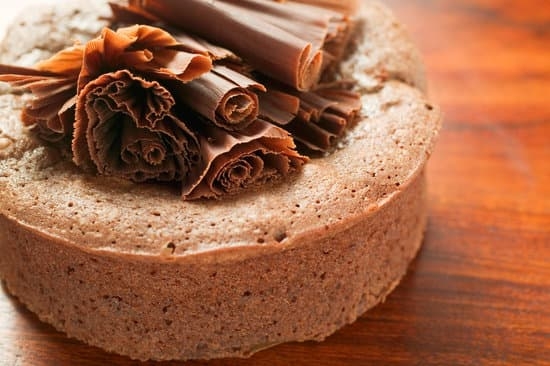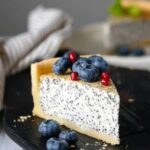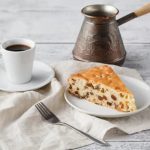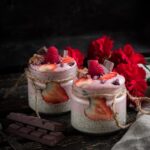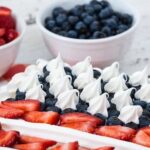Frosting is an essential component of cake decorating, playing a crucial role in not only enhancing the appearance but also elevating the overall taste of a cake. Whether you’re a beginner or a seasoned cake decorator, mastering the art of frosting is key to creating stunning and delicious creations. From intricate designs to simple elegance, the right frosting can take your cake to the next level.
Cake decorators have a variety of options when it comes to choosing the perfect frosting for their creations. Popular choices include buttercream, cream cheese, fondant, and royal icing, each offering unique textures and flavors that cater to different preferences and design requirements. The type of frosting you choose can significantly impact the final result of your cake, making it essential to understand the characteristics and uses of each.
In addition to selecting the right type of frosting, having the proper tools is equally important in achieving professional-looking results. Piping bags, tips, offset spatula, turntable, and bench scraper are just some of the essential tools every cake decorator should have in their arsenal. These tools not only help in applying frosting smoothly and evenly but also allow for creative techniques to bring your cake design visions to life.
The Basics of Frosting
Buttercream frosting is a classic and versatile option that is widely used by cake decorators. It is made with butter, powdered sugar, and often includes flavorings such as vanilla extract. Buttercream can be easily colored, flavored, and piped into various designs, making it a popular choice for decorating cakes for any occasion. It also has a creamy texture that is easy to spread and smooth onto cakes.
Cream cheese frosting is another favorite among cake decorators, especially for red velvet cakes or carrot cakes. This type of frosting combines cream cheese with butter, powdered sugar, and vanilla extract to create a tangy yet sweet flavor profile. Cream cheese frosting has a slightly softer consistency compared to buttercream but holds up well for piping decorations or forming intricate designs on cakes.
Fondant is a rolled icing that gives cakes a smooth and sleek finish, perfect for creating clean and professional-looking designs. Fondant can be dyed in various colors, molded into shapes, or embossed with textures to suit different cake themes. While fondant may not have the same taste as buttercream or cream cheese frosting, it offers a unique aesthetic appeal that many cake decorators appreciate when creating custom cakes for special events or celebrations.
| Type of Frosting | Description |
|---|---|
| Buttercream Frosting | A classic and versatile option made with butter, powdered sugar, and flavorings like vanilla extract. Easy to color, flavor, and pipe. |
| Cream Cheese Frosting | A tangy yet sweet option combining cream cheese with butter, powdered sugar, and vanilla extract. Great for red velvet or carrot cakes. |
| Fondant | A rolled icing that provides a smooth finish to cakes and allows for creative shapes and designs. Ideal for special occasions. |
Essential Tools
When it comes to frosting cakes like a pro, having the right tools at your disposal is essential. Piping bags are a must-have for cake decorators, allowing for precise and intricate designs to be piped onto the cake surface. Coupled with various tips, these piping bags can create anything from delicate swirls to intricate flowers with ease. An offset spatula is another crucial tool for achieving smooth and even layers of frosting on your cake, ensuring a professional finish.
In addition to piping bags and tips, a turntable is a game-changer when it comes to frosting cakes. This rotating platform allows you to easily maneuver around the cake, ensuring even coverage of frosting on all sides. A bench scraper is also handy for achieving sharp edges and smooth surfaces on your frosted cake. It’s perfect for scraping excess frosting off the sides and creating clean lines for a polished look.
Assemble these essential tools before diving into your cake decorating project, and you’ll find that they make the process smoother and more enjoyable. Whether you’re a beginner or seasoned cake decorator, having the right tools on hand can make all the difference in creating stunning works of art that taste just as good as they look.
With piping bags, tips, an offset spatula, turntable, and bench scraper in your arsenal, you’ll be well-equipped to bring your cake decorator frosting recipe to life in style.
Cake Preparation
When it comes to cake decorating, one of the most crucial steps is preparing your cake before frosting. Properly preparing your cake ensures a smooth and professional-looking finish that will make your decorations shine. Here is a step-by-step guide on how to prepare your cake for frosting, including leveling, crumb coating, and chilling:
1. Leveling: Before you start frosting your cake, it’s essential to ensure that the top of the cake is level. This can be achieved by using a serrated knife or a cake leveler to carefully trim off any domed or uneven parts of the cake. A level surface will make it easier to stack multiple layers and create a clean finish.
2. Crumb Coating: Crumb coating is a thin layer of frosting applied to the outside of the cake to seal in any loose crumbs. This initial coat helps create a smooth surface for the final layer of frosting and prevents any crumbs from mixing with the outer layer. Use an offset spatula to apply a thin layer of frosting all over the cake, then chill it in the refrigerator for about 30 minutes to set.
3. Chilling: Chilling your crumb-coated cake is essential before applying the final layer of frosting. This step helps firm up the crumb coat, making it easier to add additional layers without disturbing the base coat. It also helps prevent the cake from crumbling or losing its shape during decoration. Make sure to chill your cake for at least 30 minutes before proceeding with decorating.
By following these steps for preparing your cake before frosting, you’ll set yourself up for success when it comes to decorating your baked creation with intricate designs and beautiful details using your favorite cake decorator frosting recipe.
Cake Decorator Frosting Recipe
Ingredients
To create the perfect cake decorator frosting, you will need the following ingredients: 1 cup of unsalted butter at room temperature, 4 cups of powdered sugar, 2 teaspoons of clear vanilla extract, and 2-4 tablespoons of heavy cream or milk. You can also add a pinch of salt to enhance the flavor. These simple ingredients come together to create a smooth and creamy frosting that is easy to work with when decorating cakes.
Step-by-Step Instructions
- In a mixing bowl, beat the unsalted butter until it is light and fluffy. This step is crucial for creating a smooth frosting texture.
- Gradually add the powdered sugar to the butter, making sure to mix well after each addition. This will help prevent lumps in your frosting.
- Add the clear vanilla extract and mix well. The clear vanilla extract is preferred for this recipe to maintain a pure white color in the frosting.
- Slowly incorporate the heavy cream or milk into the mixture until you reach your desired consistency. The amount may vary depending on how thick or thin you want your frosting to be.
- Once all the ingredients are mixed thoroughly, your versatile and stable cake decorator frosting is ready to use.
Tips for Success
When preparing this frosting recipe, ensure that your butter is truly at room temperature to avoid any lumps in the final product. You can also adjust the amount of powdered sugar and liquid added to achieve the ideal consistency for your cake decorating needs.
If you prefer a stiffer frosting for intricate designs, simply add more powdered sugar. On the other hand, if you need a thinner consistency for smoother finishes, add more heavy cream or milk gradually until you reach your desired texture.
By following this cake decorator frosting recipe and incorporating your own creative touches with coloring and flavoring options, you’ll be able to elevate your cake decorating skills and impress with beautifully frosted cakes for any occasion.
Coloring and Flavoring Frosting
In addition to color, flavor is another important aspect to consider when preparing your cake decorator frosting recipe. From classic vanilla and chocolate to exotic flavors like coconut or espresso, there are endless possibilities to experiment with.
To ensure that the flavor complements your cake design, start with a basic buttercream frosting base and gradually add extracts or flavorings until you achieve the desired taste. Remember to taste test along the way to adjust the intensity of the flavor according to your preference.
If you want to take your frosting decoration skills to the next level, consider using multiple colors and flavors in one design. Creating a rainbow effect by blending different colored frostings or incorporating complementary flavors like lemon and blueberry can add an exciting twist to your cakes.
Don’t be afraid to get creative and experiment with different combinations until you find what works best for your unique cake creations. With these tips on coloring and flavoring frosting, you’ll be well-equipped to elevate your cake decorating game and impress everyone with not just how beautiful but also delicious your cakes are.
Techniques for Decorating
Piping Flowers
Piping flowers with frosting is a classic and elegant way to decorate cakes. To create beautiful floral designs, you will need piping bags and tips in various shapes and sizes. Start by practicing different flower styles on a flat surface before moving on to your cake.
For example, you can pipe buttercream roses by creating a small mound of frosting in the center and swirling around it to form petals. Other popular flowers to pipe include daisies, peonies, and sunflowers. Once you feel confident with your piping skills, you can adorn your cake with a stunning floral bouquet.
Creating Ombre Effects
Ombre effects using frosting add depth and dimension to cakes, making them visually striking. To achieve this gradient look, prepare different shades of frosting by adding varying amounts of food coloring. Start by applying the darkest shade at the bottom of your cake and gradually transition into lighter shades as you move upward.
Use an offset spatula or bench scraper to blend the colors seamlessly for a smooth ombre effect. You can experiment with different color combinations to create a unique and eye-catching design.
Using Stencils
Stenciling with frosting is a simple yet effective way to add intricate patterns or designs to your cakes. First, secure the stencil onto the surface of your cake using masking tape or icing spreaders to prevent any shifting during the process. Then, use a palette knife or offset spatula to gently spread a thin layer of frosting over the stencil openings.
Carefully lift the stencil away from the cake to reveal the intricate design underneath. You can customize your stenciled decorations by using colored dusts or edible glitter for added flair. Experiment with different stencil designs to enhance the overall look of your cake decoration.
Troubleshooting
Frosting plays a crucial role in cake decorating, as it not only enhances the appearance of a cake but also contributes to its overall flavor. Whether you are a novice baker or an experienced cake decorator, having the right frosting can truly elevate your creations to new heights. From classic buttercream to elegant fondant and intricate royal icing, the type of frosting used can make a significant difference in the final product.
When working with frosting, it’s essential to have the right tools at your disposal to achieve professional-looking results. Piping bags, tips, offset spatula, turntable, and bench scraper are just some of the tools that every cake decorator should have in their arsenal. These tools can help you create smooth and beautifully decorated cakes that will impress any crowd.
In conclusion, mastering the art of frosting is essential for anyone looking to take their cake decorating skills to the next level. By following a reliable cake decorator frosting recipe like the one provided in this article and learning how to troubleshoot common issues like air bubbles or consistency problems, you’ll be well on your way to creating stunning and delicious cakes that will leave a lasting impression on everyone who tries them.
So don’t be afraid to experiment with different types of frostings, colors, flavors, and techniques – let your creativity shine through as you embark on your cake decorating journey.
Frequently Asked Questions
What Kind of Frosting Do Cake Decorators Use?
Cake decorators often use buttercream frosting for its versatility and ability to hold intricate designs well. Buttercream can be easily colored, flavored, and piped into various shapes, making it a favorite among decorators.
What Frosting Do Professionals Use?
Professionals in the baking industry typically use Swiss meringue buttercream or Italian meringue buttercream for their cakes. These frostings are known for their smooth texture, stability, and ability to hold intricate decorations flawlessly. They provide a luxurious finish to any cake.
What Kind of Frosting Do Most Bakeries Use?
Most bakeries use a type of frosting called American buttercream due to its affordability and simplicity. This frosting is made with powdered sugar, butter, vanilla extract, and milk, creating a sweet and creamy topping that appeals to a wide range of customers.
It is easy to spread on cakes and cupcakes, making it a popular choice for bakeries looking for efficiency in their production process.

Welcome to our cake decorating blog! My name is Destiny Flores, and I am the proud owner of a cake decorating business named Cake Karma. Our mission is to provide delicious, beautiful cakes for all occasions. We specialize in creating custom cakes that are tailored specifically to each customer’s individual needs and tastes.

